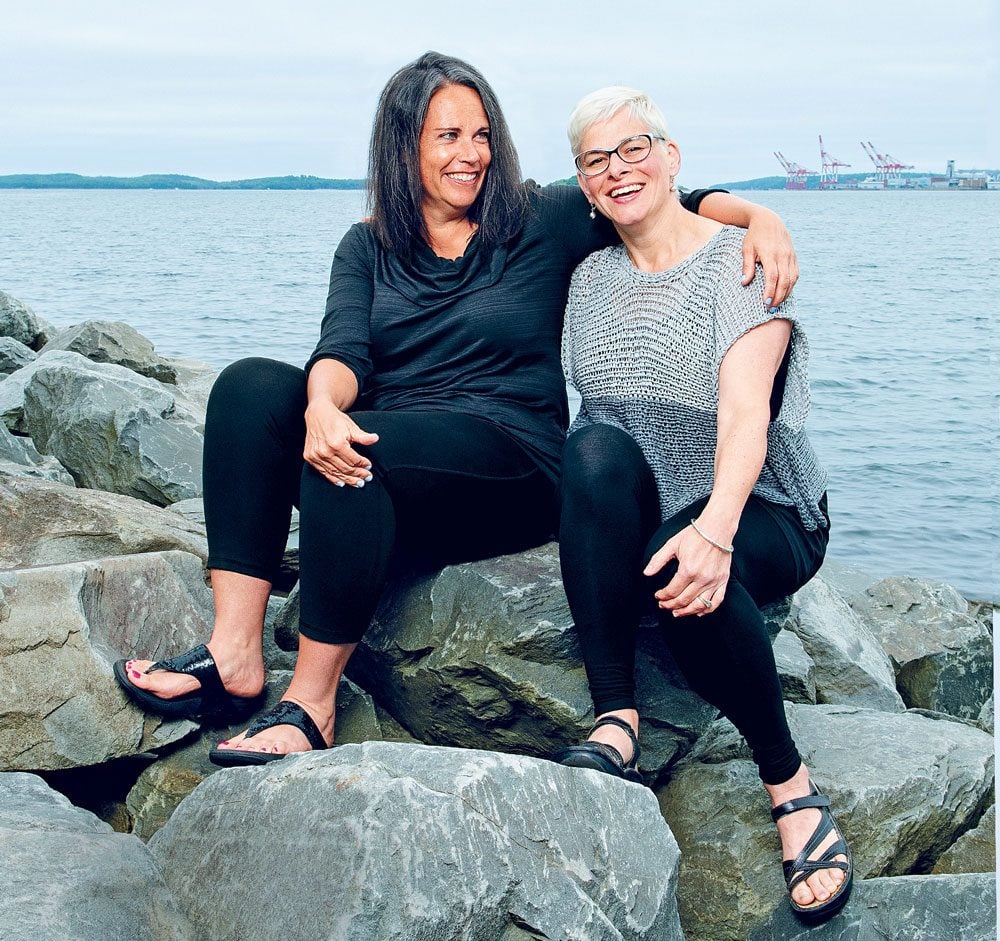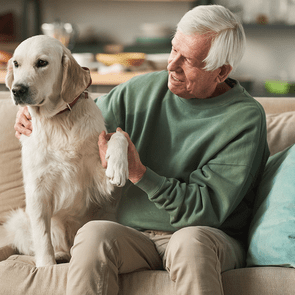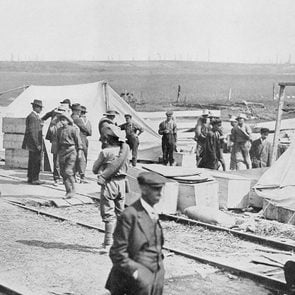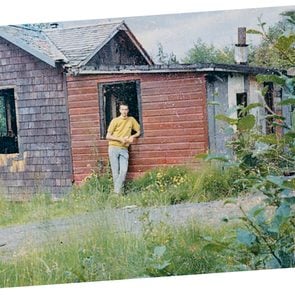If you’re like me, you adore eggs Benedict, but hesitate to make them often because poaching eggs and making Hollandaise sauce seems like a huge hassle. Hollandaise sauce still requires some careful doing, but a TikTok hack shared by numerous accounts reveals just how easy it is to make microwave poached eggs.
Can You Microwave Poached Eggs?
Yes! You really can. And you don’t need any special tools to do it. There are plenty of TikTok videos out there if you want to watch a video demonstration first.
How to Microwave Poached Eggs
There are a couple of methods for microwave poached eggs. Basically, one involves heating water, then adding the raw egg and heating the water again, while another involves submerging the egg and cooking it that way.
Here’s a clear and easy video showing the first method, from TikTok creator Elise Brulotte:
@eliseseatsmicrowaved poached eggs are my fav time saving hack — i promise, try it !!!♬ original sound – elise
And here’s an equally useful version from chef Erica Wides:
@thechefsmartypants How to poach an egg in the microwave. #eggs #poachedegg #poached #cookingvideos #cookingskills #cooking ♬ original sound – Chefsmartypants
Two Methods for Microwave Poached Eggs
I’m neither a chef nor an influencer, just a person with a microwave and a bunch of eggs. So I tried both versions!

Partially Submerged in Water
Brulotte’s version requires heating a 1/4 cup water in the microwave for a minute, then adding the egg, poking but not breaking the yolk with a toothpick, covering it and cooking it again for 30 seconds.
This method worked every time! But I was a bit unnerved, because even though I poked the yolk as instructed, the egg still made a big POP as if it were exploding. I guess that’s why you cover it—and it didn’t really explode either time. (But eggs can explode in the microwave, so be sure to poke and cover.)
The resulting eggs were cooked a little closer to soft-boiled than poached to me, but I didn’t mind that.

Fully Submerged in Water
Then, I tried Chef Wides’ version, where she submerges the egg in water and then cooks it all at once (warning of an “eggs-plosion” if the egg isn’t submerged). The only problem with this method was the chef’s vague timing. She said her current microwave took 44 seconds, but her old microwave took only 36 seconds, suggesting a 35-50 second range. She didn’t say what wattage her microwave had, so the timing was left up to me.
I tested both the 36 and the 44 second method, and found the egg almost raw the first time and only slightly more cooked the second time. So then I went for the longest part of Wides’ range, 50 seconds. This, in my 1100 watt microwave, turned out to be eggs-actly right. Firm white, runny yolk, delicious—especially when topped with a shake of Everything Bagel seasoning.
How Else Can You Poach Eggs?
Of course, you can poach eggs using the traditional stovetop method. You can follow Taste of Home‘s guide to make perfect poached eggs, though some cooks still struggle with this method.
I’m already hatching new recipes to get even more poached eggs into my life!
Next, find out how to buy the best eggs at the grocery store.
Do car company engineers draw straws to decide what side of the car the fuel door goes on? No—but they might as well. If you’ve ever been stuck in a long line for gas and spent the time wondering why your fuel door is on the left (or right), don’t expect a succinct answer.
According to Ford spokesman Mark Schirmer, as reported on Allstate, engineers are free to place fuel doors on the side of the car that offers the easiest packaging. And while one on each side would be rather convenient, we’re not likely to see dual fuel doors anytime soon—there’s neither the room nor the demand for them.
“The placement of the fuel door is mainly a factor of fuel tank design, location, and underbody packaging,” Nissan’s Steve Yaeger told Allstate. “With all of the structure and components located underneath the vehicle, (engineers) would quickly encounter restrictions in trying to route the filler tube to the same side on every vehicle.”
Schirmer says North Americans prefer fuel doors on the left side of their cars, probably because it makes it easier for them to place their car’s left fender close to the fuel pump. For this reason, it’s possible that drivers in the U.K., Australia, New Zealand, India, and other countries that drive on the left side of the road favour a right-hand-side fuel door. But there’s nothing to confirm that driver preference is a factor. There are regulations about where the fuel door should be positioned, but these don’t specify the right or left side of the car. (Current regulations regarding car fuel systems demand the filler be at the widest part of a car, inboard of any crumple zones, and safe from dripping onto any hot exhaust bits or electrical wiring.)
Robert Frank, writing for PBS Newshour, puts forward the “equilibrium” arguments, suggesting that if all cars had fuel doors on the same side, 50 percent of the pumps in the gas station would be unused, and we’d all spend even more of our time waiting in line to get gas. (Find out how to get better gas mileage and pay less at the pumps.)
Oh, and if you can’t remember the location of your fuel door (and if we’re completely honest, most of us will have to take a second and think about that before we answer), simply look at the little diamond-shaped arrow on the fuel gauge on your dashboard—it points to the side of the car where the fuel door is. Do it before you pull up to the pump, to avoid the embarrassment of having to get back into your car and drive to another pump.
Never noticed that fuel door indicator on your dashboard? Check out more weird car features you probably didn’t know about.
Edna and Wimsy Sinnatamby, 83 and 87 (above), have lived in their modest Toronto townhome for more than three decades. It was the first house they bought in Canada, and it’s filled with treasured photos.
There are pictures of the couple at Wimsy’s 80th birthday celebration, alongside their three adult sons and four granddaughters. There are pictures of recent family reunions in Singapore, where the Sri Lankan couple has family, the women posing in dazzling saris. And then there is a faded eight-by-10 print of a much younger Wimsy, dressed in a fitted black suit and skinny tie, next to Queen Elizabeth and Prince Philip. The photo was taken two years before Wimsy and Edna fled to Canada to escape the civil war between their minority ethnic group, the Tamils, and the majority Sinhalese.
The couple gave up their financial stability to move here back in 1983, but eventually worked their way up to stable jobs: Wimsy in the credit-card-fraud department at one of the big banks and Edna as a home-daycare owner.
These days, the couple have real estate agents knocking on their door regularly, trying to persuade them to sell, but they wouldn’t dream of it. “I say, ‘Could I come live with you? Because I wouldn’t have anywhere to go,’” jokes Wimsy. Besides, Edna and Wimsy have found a community here.
When Wimsy slipped and fell a couple years ago, badly injuring his forehead, a neighbour arrived before the paramedics did. And when he got a hip replacement, friends and church members took turns driving Edna to and from the hospital. Over the decades, they’ve built a good life. And so, they want to stay.
More than 90 percent of seniors live at home and want to remain there as long as possible, according to a 2012 study by the Health Council of Canada. Despite that wish, if we reach the age of 85, Statistics Canada estimates there is a one-in-three chance we’ll have to live in a seniors’ residence or nursing home as our health and safety needs change.
But advocates for seniors insist that we’re losing our independence and our social communities too soon because we aren’t prepared to adapt and find the resources available to help extend our lives at home. And while the average life expectancy for Canadians is about 82 years, we’re living longer overall—centenarians are the second-fastest-growing age group, after baby boomers aged 60 to 64. More and more seniors will soon have to decide where, and how, they’ll age.
Despite numerous challenges associated with “aging in place,” it’s still by far many people’s preferred choice, and with good reason: experts say that the social connections, sense of autonomy and comforts of home are what’s best for older adults.
If you’re planning on growing older in your home, these tips will help you make the most of it.
Tips For Aging in Place
Look ahead
Most of us don’t plan our retirements as well as we could. It’s not all about saving for retirement: we also have to figure out what will be necessary to continue living at home long-term, such as accessing a complex system of government-funded home care and community programs.
“People don’t know how to navigate the system. They don’t know their rights,” says Danielle Pollack, a social worker and founder of Equinoxe, a Montreal health-care-management company with a focus on geriatric care. A 2013 report by Heart and Stroke found that during the last 10 years of life—when we deal with higher levels of disability and illness—our health is at its worst. It’s also when our care costs are at their highest. Still, an RBC poll showed that 83 percent of seniors would prefer to pay for home care as needed, rather than move into a seniors’ residence, long-term care facility or with relatives when their health takes a dip.
To prepare, speak with your doctor as soon as possible about pre-existing medical conditions and services you may need as you age, such as support to deal with diabetes, arthritis or depression. You’ll also need to have some serious discussions with family members and a financial adviser as part of that planning process. For instance, you might want to leave your house to your kids, or perhaps you’ll need to rely on them for help. The federal government has a useful checklist to help people organize aging in place. It helps you assess how prepared you are in nine different areas of your life, such as your health, home, finances and transportation.

Make home modifications to enable aging in place
A few simple changes can keep your home comfortable as you age, says Dr. Roger Wong, clinical professor of geriatric medicine at the University of British Columbia. “The essence is to make sure we maintain safety and quality of life,” says Wong. He points out that falls are the leading cause of injury-related hospitalizations among Canadian seniors, as 20 to 30 percent of people over 65 fall each year. Even a simple tumble can cause a broken hip, leading to disability and loss of independence.
Some of the easiest modifications you can make, says Wong, are installing grab bars in the shower, installing a raised toilet seat, decluttering and getting rid of excess furniture. And while wall-to-wall carpeting can be softer on falls, many seniors prefer hardwood floors—they’re easier to navigate with walking aids. Edna and Wimsy removed their loose rugs to prevent tripping and replaced their sofas with higher, firmer armchairs that are easier to get in and out of. After Wimsy’s hip replacement 10 years ago, the couple changed their bathtub to a walk-in shower, which cost around $3,000. And while the stairs in their townhouse are good exercise for now, they would opt to install a stairlift rather than move out.
Retrofitting your home to make it accessible can be expensive—anywhere from a few thousand to hundreds of thousands of dollars in renovation costs—but seniors may be eligible for a home-accessibility tax credit to help pay for these changes.
Embracing tech can also help you stay secure. Seniors should have their own smartphones (updated with emergency numbers) and learn how to use them when their memory is still good, says Wong. Smart watches, video monitoring and emergency personal response systems, such as MedicAlert or Lifeline, can also be critical to call for help.

Accept help at home
Even if you’re in good health, you’ll likely need to delegate some chores. The Sinnatambys have been married for 62 years; they take care of each other. Edna cooks, Wimsy drives, and they both like to go dancing (they call it “shuffling” these days). Still, a neighbour insists on carrying their trash bins to the bottom of the sloped driveway, which gets icy during the winter. And Edna has a shoulder injury, so she hires a cleaning service once a month to do some of the heavier lifting.
There are a number of public and private home-care options to help with personal-care tasks, such as bathing, dressing, grooming—and simply offering company. Home care provided by the provinces is evaluated on a needs basis and can include up to 50 hours a week near the end of life. Privately, home care averages around $30 an hour, including at nighttime.
During the daytime, you might also consider a private or subsidized adult day program, such as Calgary’s Age Care Glenmore’s Adult Day Support Program. Services like these provide health, social and recreational support for seniors and a break for their caregivers. Age Care Glenmore’s program costs only $10 a day and includes nutritious meals, fitness classes and activities, such as card games and gardening. While many programs cater to active seniors, others are geared toward older people who are frail, recovering from a stroke or have dementia, and are staffed with community nurses, social workers, volunteers and health-care students.

Maintain social support
Global research has warned of an epidemic of social isolation, and aging is a well-known risk factor, as critical life transitions, such as retirement, the death of a spouse or losing a driver’s licence, come into play.
In Canada, as many as 44 percent of seniors living in care facilities have symptoms of depression, and men over the age of 8o have among the highest suicide rate of all age groups. As well, researchers in the United States have found that lonely people are 50 percent more likely to die prematurely than those with healthy relationships.
While loneliness is not linked to any single disease, it is a risk factor for a wide range of illnesses and causes of death, as our stress, or “fight or flight” response to feeling isolated can trigger a cascade of hormones that cause physiological changes in the body. In fact, loneliness is even more dangerous than obesity and just as bad as smoking 15 cigarettes day, according to studies from Brigham Young University.
Community services, such as the Greater Toronto Area’s Social Services Network, can be a lifeline to vulnerable seniors, providing regular social opportunities, cultural events and informational talks at little or no cost, whether it’s a police presentation about fraud prevention or a health workshop about Alzheimer’s.
“There are a variety of funded services out there, and we’re trying to bring them to the table. A lot of seniors are not technologically adept enough to be able to search for them,” says Alykhan Suleman, the executive director of Social Services Network. Suleman says his organization has also started a pilot project to teach seniors how to use tech, including social media, which can help keep them connected. With the necessary social support, aging in place can also help people living with dementia—familiar surroundings can help them stay oriented, says Wong, although the speed of memory loss cannot be slowed down.
Learn how to spot the early signs of dementia.
Manage money wisely
Aging in place is often the most affordable option, especially if you don’t need to get out of debt or require 24/7 care. While you may be spending money on making your home more accessible and paying for some help around the house, there are grants and other taxable benefits to help lower those costs—pension credits, property tax rebates, home-accessibility tax credits, disability supports, medical coverage and rental subsidies, to name a few. Speak with a certified financial planner, as well as an accountant or tax expert who’s up to date on the latest benefits for seniors. Ideally these conversations should start happening during pre-retirement, at age 50.
If you have a mortgage or other debt, however, downsizing to somewhere more affordable or moving to a seniors’ residence might be a wiser decision says Rick Lowes, vice-president of retirement strategy at RBC.
Depending on where you live, rent in a basic seniors’ residence can run anywhere from $1,500 to $3,500, or over $10,000 a month for higher-end amenities. “It’s hard to understand the financial implications of moving from your home. People often find themselves in a position where they need to act immediately, and they’re scrambling,” says Lowes. He recommends speaking with a financial planner, who can help you anticipate the costs of significant health issues and how they will fit in with your income in retirement.
Alternatives to aging in place
Sometimes aging in place just isn’t possible. It may cease to be safe if you’re dealing with mobility or cognitive issues, or become unrealistic if you can’t afford support, or your family is burning out from caregiver stress.
You might choose to move to a seniors’ residence, and then to a longer-term care home, which can be co-paid or fully subsidized by the province, says Audrey Miller, social worker, founder and managing director of Elder Caring Inc. in Toronto.
Every step of the way, says Miller, there’s help. “We want people to know that they’re not alone in this,” she adds. “There are a lot of ways to be creative about where and how you’re going to age. Boomers are the generation that’s looking for that.”
Edna and Wimsy have learned to live with some health challenges related to getting older, such as injuries and health scares. Earlier this year, Wimsy had another slip on the sloped driveway and needed stitches in the back of his head, but he recovered quickly.
Throughout these setbacks, they both still count their blessings daily and manage to stay active and intellectually engaged. While their kids want them to downsize to a condo to avoid having to deal with house repairs, stairs and that iffy driveway, that’s not how they picture growing old together. Their hard-won home and community feel too comfortable to abandon. “What you put into your life and marriage is what you will reap when you’re older,” Edna says.
Now that you know what’s involved in aging in place, explore some of the new alternatives to retirement living.
For Edmontonians, July 31, 1987, will always be remembered as “Black Friday.”
Around 3 p.m. that day, a dark funnel cloud touched down in southeast Edmonton. As it cut a 37-kilometre swath of destruction through the eastern part of the city, eyewitnesses described a roaring sound “like a freight train” as 400 kilometre-per-hour winds exploded buildings and tossed cars around like toys.
By the time the tornado dissipated an hour later—more than ten times the average duration of a tornado—it had left 27 people dead, 600 injured, 300 homes destroyed, and $181 million in damage ($375 million in today’s Canadian dollars). Rated an F4 on the Fujita scale—the second most powerful category of twister on record—the Black Friday Tornado wasn’t the only freak weather incident in Edmonton that week. Over the three preceding days, more than 300 mm of rain flooded the region, causing four major rivers to rise by as much as eight metres. Tennis ball-sized hailstones pelted the western part of the city, knocking two people unconscious and setting an Alberta record for hailstone diameter.
That Friday afternoon, traffic had already begun piling up on the Sherwood Park Freeway ahead of a long weekend. With a tornado alert broadcast on radio just minutes before, drivers had no time to escape before the twister rolled over them. “I got out of my car to help people and got thrown 30 feet into a field,” Dale Campbell told a TV reporter. “We picked up bodies…and took them to the ambulances on the freeway.”
The areas of Clareview, Strathcona Industrial Park and the Evergreen mobile home park were the hardest hit. “It was like a giant took a big spade, dug in, and turned the place upside down,” said machine shop worker Glen Petruk. Families described hiding in their basements, where concrete foundations provided the most reliable shelter, listening to the sounds of their houses being torn apart above.
Amid the death and destruction, stories of miraculous survival emerged. A tiny one-week-old baby girl was ripped from her grandfather’s arms by the extreme winds at the Evergreen mobile home park. While her family frantically searched for her, an unknown stranger found baby Kristen alive and turned her in to police, who rushed her to a hospital where she recovered and was reunited with her mother.
The devastation wreaked by the Black Friday Tornado—the worst in Canada’s history—can still be felt. For years afterward, traumatized survivors recalled hiding at every rumble of thunder. But the tornado also sparked an overhaul of the province’s disaster warning and response system, leading to the creation of the Alberta Emergency Management Agency in 1988, which co-ordinates resources for more than 50 types of natural and man-made disasters.
Next, find out why Calgary is the hailstorm capital of Canada.

Sapawe: My Hometown
I left the small but lively town of Sapawe in northwestern Ontario when I was 12 years old. The year was 1960 and having spent all of my childhood there, this community was all I ever knew. But when my family of six was on the move, so was I. Years flew by and though I never returned to that small community, my memories of growing up in Sapawe were always happy ones. I knew there would come a day when a visit to my childhood hometown would be in order, and with 60 years having flown by, it seemed like the time was right to return.
I began to investigate what had become of Sapawe. Using Google Earth, I located my beloved Ontarian childhood town. I was able to look down on the site where Sapawe was located, with the satellite view clearly showing Sapawe’s winter landscape.
To say I was a little shocked by what I saw would be an understatement, as not one house or recognizable building was left standing. All I saw was a sprawling lumber operation with a few giant structures and a number of roads. Luckily, the location of the railroad tracks remained unchanged and that allowed me to get my bearings.
Virtual Recall
I zoomed in on the lakeshore where our log house had once stood. Though I was not convinced that the shoreline was still the same, I found the bend in the lake where we used to live. There was no log house left, and the cabin behind it had also vanished. In fact, the only house that I could find from the old days was a place we called Whitehead’s, another lakeshore home visible from our front yard.
I also virtually visited the road we used to call the North Road, which still headed north and past an old open-pit mine. The water control structure, which we called The Falls, was still south of our old home and continued to outflow into the Atikokan River. A bay across from our house used to feature an amazing wooden causeway that led to a mysterious fishing mecca called The Floodwaters. It no longer had those appealing features and was now called Dump Bay. What a sad name!
It was clear to me that there was no longer a town of Sapawe to visit. What do you do when life takes away a town that meant so much to you as a child? I have opted to write a short story describing a few highlights of the wonderful community that once thrived there. This is my way of keeping the memory of that tiny village alive.
Sapawe Recollections
The lumber industry was always a big part of the existence and identity of Sapawe. Most of the clearing in the boreal forest where the town sat was given over to the lumber and logging industry. This included the sawmill, bunkhouses, cookhouse, giant horse barn, two blacksmith shops and hundreds of acres of cleared hillsides covered with freshly cut lumber, stacked and ready for market.
I can’t say with certainty but I’d guess that not one of the dozens of private homes in town were built on deeded land, meaning the whole town was on mill property. But the people of Sapawe carried on their lives like it was any other town, shopping at the company store, obtaining electricity from the company power plant located behind the company garage and getting fuel at the company fuel depot.

In Sapawe, there were two elementary schools, the new school and the big school. The new school was for Grades 1 to 4 and the big school for Grades 5 to 8. Christmastime was very memorable no matter which school you were attending because all grades were expected to participate in putting on the annual Christmas concert. Skits, multi-act plays, choreographed musical marches and group singing were all part of the show. The best part for us kids, was getting several afternoons off to gather at the big school to practice.
The evening of the Christmas concert was the only time we got a ride to school, as the whole family drove “up town” after supper to watch the concert. The highlight of the evening was of course, the arrival of Santa Claus.
The Heart of Sapawe
The only private business in town was the Sanchez Coffee Bar located on the main strip. This café was the heart of our community; all flocked to Sanchez, both young or old. Kids went for the comics, the candy and the pop. A handful of jawbreakers could be had for the low price of a penny! Adults went for everything from a full meal to a cup of a coffee and a slice of pie, or even just to chat.
For me, there was nothing better in the whole world than sitting on one of the coveted stools next to Dad, sipping a pop and staring at the wonders of the world on the shelves behind the server. Some of the items on display were Blue Mountain Pottery figurines, pictures made from birch bark and moss, jackknives with a picture of a Mountie on horseback, a perpetually dipping bird, popular sayings on plaques such as “Keep your temper, nobody else wants it” and many other eye-popping items.

During summers, on sometimes very hot afternoons, Sanchez Coffee Bar’s big side room transformed into Sanchez Theatre. I remember watching a lot of western movies and some Dean Martin and Jerry Lewis comedies, but the only two titles I can recall are Annie Get Your Gun, and Niagara with Marilyn Monroe. When the movies and cartoons were done, we lined up in the coffee bar to buy a sweet treat from the cooler for our long, hot walk home. My favourites were a root beer Popsicle, and a strawberry sundae in a paper cup that I ate with a flat wooden spoon.
I am brimming with many more memories of life in the little town of Sapawe, all from my childhood perspective, which only tells a portion of the town’s story. It was a chapter of my life that I have never forgotten and those years shaped many of my lifelong interests such as painting, drawing, a love for nature and a passion for birding.
So, do I still plan to return to Sapawe, knowing that it is no longer the town it once was? Having enjoyed the virtual drive up to the locked gates of Sapawe many times now, I hope that one day, someone with the real keys to that locked gate will read this story and say, “Welcome to your childhood hometown! Come on in and explore to your heart’s content. Your town’s not gone, it’s just different.”
Next, read the haunting story of Balaclava, Ontario’s most famous ghost town.
The benefits of having a dog
If you have a dog, chances are you’re walking it at least 30 minutes a day, and likely more—an activity that goes a long way towards keeping you fit.
In fact, a British study of dog owners found that, on average, walking a pup added an extra 2,700 steps to their daily total, about 20 more minutes of physical activity per day than non-dog owners get. What’s more, most of that walking was done at a “moderate cadence”—enough to get your heart pumping but still carry on a conversation—the minimum intensity Health Canada recommends adults get for 2.5 hours a week.
Walking your pooch for that amount of time not only benefits your quality of life—it could prolong your life. Getting 150 minutes of moderate exercise a week reduces your risk of heart disease by up to 15 percent, cuts your chances of developing breast, stomach, kidney and other cancers by up to 20 percent, and helps prevent and manage diabetes.
And, as a bonus, more exercise during the day also seems to set the stage for better nights. According to a survey of 6,500 retired London civil servants, dog owners were more likely to report having an easier time falling asleep at night than non-dog owners. (Unfortunately, perhaps thanks to their nocturnal hijinks, cats seemed to have the opposite effect.)

Pets boost your immune system
According to the so-called hygiene hypothesis, identified in the late 1980s, growing up indoors in disinfected spaces later causes our bodies to overreact to harmless substances, making us more prone to allergies and asthma. Dogs and cats, with their muddy paws, copious dander and propensity for licking us, introduce more microbial diversity that habituates our immune systems. Research shows that children who live with pets from birth have lower rates of allergies and asthma, and the more animals in the house, the greater the protection. Kids with four or more cats or dogs had half the rate of allergies as non-pet owners.
Even in adulthood, there’s new evidence to suggest pets may have a notably positive effect on our guts—with links to both mental and physical health. One pair of researchers at the University of Arizona are studying whether the sharing of bacteria between dogs and their owners can alter our microbiome—the community of micro-organisms that dwell inside our bodies—in a way that changes our brain chemistry, alleviating major depression. “We were intrigued by previous research that found that dogs and humans share gut bacteria just by living in the same home, and you get the same amount from your dog as you do from your spouse,” says Dieter Steklis, co-director of the Human-Animal Interaction Research Initiative.

Pets lower your risk of a fatal heart attack
Researchers at the University of Minnesota tracked 4,000 people—most of them for over a decade—and found that cat owners had a 30 percent lower risk of dying of a heart attack.
Given you don’t need to take a cat for walks, what accounts for the lower risk? The researchers hypothesized—and most cat owners would agree—that cats’ inherently unbothered nature has a calming effect. And research has shown that, like exercise, spending time with a pet—any pet—lowers stress, an important contributor to heart disease. In fact, students at Washington State University showed significantly lower levels of cortisol in their saliva after spending just 10 minutes petting a cat or dog. Other studies have shown that human-animal interaction lowers your blood pressure and releases the bonding hormone oxytocin, which reduces anxiety and pain and improves cardiovascular function.
They help you manage a chronic condition
With their clockwork expectations for feeding, walks, affection and play, animals don’t cut their owners much slack—and that can be a good thing for chronic disease sufferers of all types.
The benefits of animals in health care were first noted by Florence Nightingale in 1860, when she wrote that a pet tortoise named Jimmy provided great comfort to wounded soldiers hospitalized during the Crimean War. In the 1960s, child psychologist Boris Levinson observed that a withdrawn, non-verbal child suddenly began communicating when Levinson’s dog, Jingles, was in the room. The field of “pet therapy” was born, and visits from trained therapy animals are now commonplace in hospitals and nursing homes.
But outside of institutional settings, pets can also help people on a more ongoing basis with the daily management of long-term health conditions. According to University of Michigan research scientist Mary Janevic, this is especially true of chronic pain sufferers looking for non-pharmacological interventions.
In 2019, Janevic led a small study of older adults with arthritis, lower back pain and other conditions, and found that pets not only helped improve mood, but compelled their owners to stick to behavioural routines that improved their pain in the long run. These included daily walks, feeding, cleaning, affection and play. “When it hurts, you don’t feel like getting up and doing anything, but it’s a use-it-or-lose-it situation,” Janevic says. “When your body becomes deconditioned, weaker muscles lead to more pain.”
In addition to all that, Janevic also points out that pets’ greatest superpower against chronic suffering is their talent for drawing all the attention and focus. “If you’re distracted from the pain, you perceive less pain, and therefore you are in less pain,” she explains.
Kelly Redmon, a Virginia based therapist who suffers from complex regional pain syndrome, says fostering guinea pigs for a local rescue group has helped her cope with an often excruciating condition. “When I care for my animals, I have to stay present even through a flare-up,” she says. “I can’t get caught in a spiral of wondering, ‘Will the pain last forever?’”
Sometimes, Redmon adds, her pets provide vicarious joy. “When I watch my guinea pigs run around their little playpen through all the tunnels, I can see that it makes them happy, and that makes me happy, too.”

Pets reduce inflammation
Inflammation is how your body responds to a perceived injury or infection, and normally it’s a good thing—when a cut becomes red and swollen, for example, it’s because an army of white blood cells are swarming in to fight off harmful bacteria. But sometimes your immune system doesn’t switch off after the fight is over, and when inflammation becomes chronic, it can silently lay the groundwork for killer diseases like diabetes, heart disease and chronic obstructive pulmonary disease.
In a small preliminary trial, researchers at the University of Wisconsin–Madison assigned foster dogs from a local humane society to a group of volunteers aged 50 to 80. After three months with a dog, some blood tests showed a drop of up to 30 percent in markers of inflammation, including interleukin-6 (IL-6), which has been linked to many inflammatory diseases, including diabetes, rheumatoid arthritis, dementia, heart disease and cancer.
“Some of the subjects also reported that they felt an increase in their sense of well-being and improved social function,” says psychiatrist and study director Charles Raison. “We don’t know for sure whether there was an association between IL-6 levels and mental health, but it may work as a virtuous cycle—having a dog makes you feel better, which makes inflammation drop, and lower levels of inflammation make you happier.”
They improve your mental health
When Sharmeen Abeysinghe, 40, left her Toronto job as an early childhood educator in 2019, she was suffering from depression and burnout. “There were some days when I’d just forget to eat,” she says. Her doctor prescribed antidepressants, and she began to feel functional again. Then came the pandemic and multiple lockdowns, causing more stress. Fortunately, Abeyasinghe and her husband, who have two children, also decided to adopt a nine-month-old terrier-lab mix named Suki.
“We thought having a dog would give us something to do while we’re at home, and she has just transformed our lives,” Abeysinghe says. “I feel so lifted by her joy, energy and unconditional love. I’ve even told my doctor I don’t think I need my medication anymore.”
A number of studies have shown that pet ownership is beneficial for people with depression, anxiety, PTSD, schizophrenia and other long-term mental health conditions. Pet owners themselves report that their animal pals provide unconditional emotional support, foster self-acceptance, help them form social bonds and serve as distractions from upsetting symptoms or episodes.
Your pet might even be a valuable mindfulness coach. “If I’m awake with insomnia at night, my bunny Gus will sit by me and let me stroke him,” says Hina Low, a 30-year-old banking assistant in Toronto who suffers from bipolar disorder. “It’s like a meditation exercise. I focus on his soft fur, the warmth of his body and the feeling of his breathing.”
Looking for a furry new addition to your family? Find out which breeds make the best apartment dogs.

A Friend in Me
Anne-Marie McElrone’s and Susan Goupil’s sons played together on the same Dartmouth, Nova Scotia soccer team, but they had never met. Then Goupil volunteered her home as the pick-up spot for the team’s uniforms—and answered the door wearing leggings and high heels. “Wow,” McElrone remembers thinking, “that’s impressive for 10:30 a.m. on a Saturday.”
It wasn’t just Goupil’s style that impressed McElrone—it was her positive energy. The two started chatting at games. When Goupil asked for help with a team barbecue, McElrone volunteered her grill. They started going to yoga together. Soon, they were introducing each other to their friend groups. “I wasn’t expecting to make new friends at my age,” says McElrone, now 53. “Not those close, turn-to-all-the-time kinds of friends.”
Close friendships can be transformative—and not just for our social calendars. Friends make us feel safe and reduce our stress. In Goupil, McElrone had found a confidante, and someone she can count on. Their now eight-year-old friendship has also helped her discover new things about herself. “I wasn’t always comfortable in my skin,” she says. “I’ve found a way to be more confident and more myself by watching her and seeing her reflect back to me what she sees in me.”
Making—and keeping—friends can be challenging at any age, but it can feel especially daunting as we grow older. Time, distance, work and family responsibilities can all become barriers to finding and maintaining friendships. Luckily, there are simple things you can do to both deepen existing friendships and build new ones.
How to Make New Friends as an Adult
Take action
When you’re feeling lonely and isolated, it can be hard to bond with others. To break the cycle—or prevent it in the first place—you need to be proactive.
Let your interests guide you and look for activities that provide consistent social interaction. Enjoy cross-country skiing? Join a weekend ski club. Love animals? Join a bird-watching group. Passionate about plants? Volunteer at a community garden. You’re bound to meet people who share your interests and maybe some of your range of life experiences, too.
Then, make the most of it: ask questions, be curious and propositional, and don’t give up. “We need five to eight interactions with someone to feel like we’re casual friends—and more than 200 hours to develop a close friendship,” says Shasta Nelson, author of Frientimacy, a practical guide to deepening friendships. “Give yourself the time: don’t go to an activity once or twice and feel like you should feel close to someone already.”
Nelson also urges people not to let their insecurities get in the way. “A lot of people say, ‘I invited her last time, and now it’s her turn.’ But if we want friendships, we need to be the ones to make them happen.”
Once you’ve established a connection, keep putting in the time. McElrone and Goupil talk regularly and get coffee together weekly. They sometimes take weekend trips.
“People get into ruts,” says McElrone. “As we get older, we sometimes think, ‘These are the things I do, and these are the people I do them with,’ and that’s that.” If you want to build your friend group, or connect more with an existing friend, be willing to get out of that rut and put in the time and effort to make friendship happen.

Build communication
Putting the time into friendships builds closeness, but it’s only one part of the equation. Establishing open communication, practising acceptance and being vulnerable are all key to feeling more connected, and can help transform an old acquaintance into a new friend. “When most of us feel lonely or dissatisfied,” says Nelson, “it’s not a lack of interaction, it’s a lack of intimacy.”
McElrone says Goupil’s openness and direct communication style gave her permission to bring her whole self to the friendship. That’s helped them build mutual trust and respect. While such open communication isn’t always easy, it is an essential part of learning how to make new friends as an adult.
When you feel unheard, you also feel less safe. That can have serious repercussions for friendships, says Amir Levine, a New York-based psychiatrist, neuroscientist and co-author of the book Attached, which explores the science of human attachment. Levine says the best relationships check five key boxes: consistency, availability, responsiveness, reliability and predictability.
When one of those is absent, it can hurt a friendship. Because we tend to expect less of friendships than of romantic relationships, we too often accept failures instead of trying to improve the situation. It’s a bad habit that can keep our friendships from reaching their full potential. Putting your finger on what you need from your friends and being able to honestly communicate that need—and to accept when your friend does the same—are required to build lasting connections.
Put in the effort
Long-time pals Lynne Everatt, Julie Smethurst and Deb Mangolt met while working for the same company. They’ve stayed close friends through job, life and location changes. Trying out new activities together is one of the ways they keep their strong friendship thriving.
“We believe we have to be deliberate about friendships, and make caring for them a priority,” says Oakville, Ontario-based Everatt, who’s in her fifties. “There’s no way you’re going to hack friendship. You’ve got to put the effort in. The more I give, the more I get.”
The trio recently wrote Acts of Friendship, a guidebook filled with activities they’ve used to build and deepen their own friendship. Suggested activities include playing improv games, big-goal brainstorming sessions and crafting fun friendship quizzes to get to know each other better. By venturing into unknown, sometimes uncomfortable spaces with your friends and sharing your fondest dreams—and most embarrassing moments—you’ll discover new things about each other and yourself.
You may also learn which friends are willing to go on a journey with you and which would rather stay home. When pursuing transformative friendships, reciprocity is key. Focus on turning up the volume on the people who display those five good friendship qualities, says Levine, and turn down the volume on everyone else. You’ll create a better social environment for yourself, and build friendships that will stand the test of time.
Now that you know how to make new friends as an adult, check out the surprising science behind friendship.

We all have something that gives us the extra confidence to go out and take on the world. It’s often a special power outfit or a lucky charm we think gives us a little boost when we have an important job interview to ace or a first date to impress. Astrology can help take that idea a step further: Each star sign has a power colour that can help bring out its very best.
“Power colours help amplify your inherent nature and grant you the confidence to express it more freely,” says astrologer Guadalupe Terrones. Depending on your sign, that could refer to how you channel your intelligence, perseverance, politeness, or trustworthiness, among other personality traits. Also, each star sign’s colour can be related to various aspects of their chart, like their ruling planet or natural element. Discover the colour that brings out your best qualities so you can update your wardrobe, as well as your home or office decor, and make things go just a little more smoothly in your everyday life.

Aries (March 21–April 19): Red
Big, bold, and in charge, Aries feels most empowered by the colour red. “Aries is ruled by the planet Mars, which, in medical astrology, is in charge of adrenal glands and blood, among other things,” Terrones explains. “So red is the perfect colour for Aries, as it represents their ability to react well in high-pressure situations and to enjoy the adrenaline that comes with adventure.” Amplify your courage and presence as a leader through this dominant colour, whether you’re working, working out, or embarking on a new adventure.

Taurus (April 20–May 20): Green
Taurus is an earth sign and, as such, connects deeply with the colour green. “Green is great for inspiring Taurus to tap into their innate prosperity and their gift of creating abundance,” Terrones says. Like a verdant, lush forest, Taurus is rich in life and splendour. Their surroundings should represent and reinforce that concept, both to make them feel at home and to share that beauty with others. From lovely houseplants to luxurious jade stone, the colour green will help Taurus look and feel their best.
Find out what your zodiac sign’s element says about you.

Gemini (May 21–June 20): Yellow
Gemini’s bright intellect and radiant personality translate to the colour yellow. Like a buzzing bee, this sign is energetic and always on the move, in body and spirit. “Gemini represents the curiosity of a young child as they learn new things,” Terrones says. Rely on scintillating yellow to inspire and revitalize you, especially in creative spaces like a home studio or work spaces like an office cubicle. Your star sign’s colour can transform lackluster surroundings with simple additions like sunflowers and yellow wall art.

Cancer (June 21–July 22): Silver
Ruled by the moon, Cancer is a very feeling and nurturing star sign that is always yearning for connection. Their power colour must reflect that lunar relationship. “Silver resembles the colour of the moon, which is ever-changing in our night sky,” Terrones explains. “Just as the moon waxes and wanes, so does Cancer.” Embracing this hue is a way of embracing themselves for who they are. Touches of silver can help them feel calm and remember that it’s OK to have emotions.

Leo (July 23–August 22): Orange or Gold
Leos are ruled by the sun and, like the sun, are often the charismatic centre of their environment. But not every Leo is 100 percent confident 100 percent of the time. Orange or gold can help them brighten their spirits on the days they feel less than their best. “These colours really represent their gift to shine as their unique self and draw attention, no matter who’s around,” Terrones says. “Leo can use orange or gold to inspire them out of their reluctance to take up the spotlight.”
By channeling your star sign’s colours, you’ll allow your inner brilliance to resonate with the world around you. That might mean dressing up with a bit of gold jewelry or displaying a flashy centerpiece on your dinner table. The bottom line: Showing confidence through your power colour can help inspire actual confidence.

Virgo (August 23–September 22): Brown
Another earth sign, Virgo is best represented by the colour brown, like the rich, life-giving soil beneath our feet. This hardworking sign may not always be recognized for its efforts, but that never stops them from giving their all. “Virgo can use brown to take pride in the depth and richness in a full day’s work,” Terrones says, “[like] a strong effort at the gym or finishing up a detailed project.” Sturdy and reliable, they feel most in the zone around wooden material and natural hues, in things like accessories, decor, and even paint colours.

Libra (September 23–October 22): Pink
Libra’s moderate temperament is best complemented by the colour pink. Much like themselves, pink can be mellow and reassuring. “Libra can use pink to inspire in others the same sense of lightheartedness when it comes to conversations that require resolution,” Terrones says. Libras are known for their commitment to partnership and mediation, which this colour can help foster. So, if you know you have a tough conversation with a friend or a boss coming up, sporting your power colour can help temper the tension. Share a soft, pink blanket with your pal on the couch, or take a rosy coffee mug into a work meeting. This technique just might help you make more money, too, as you smooth things over diplomatically.

Scorpio (October 23–November 21): Black
Many people associate darkness with misfortune or sadness, but what this shade truly represents is the unknown. Secretive, abstract, and contemplative, Scorpio feels more comfortable in the unknown than any of the other star signs. “Wearing black may help Scorpio feel a little more grounded in times of uncertainty,” Terrones says. Shadows are ambiguous, but embracing that ambiguity actually makes Scorpio more powerful. Get yourself in the right mental space for a nerve-racking job interview by wearing a black accessory, like a wrap bracelet or a fashionable scarf.

Sagittarius (November 22–December 21): Purple
Historically, purple was a rare pigment that was once exclusive to nobility and royalty. Sagittarius revels in that regal vibe and often enjoys holding court or playing host. “There’s nothing a Sagittarius loves more than being looked up to for all that they’ve learned,” Terrones says. “Sagittarius should wear purple in preparation for a presentation or a public-speaking engagement so that it can evoke in them the role they were made to play: the philosopher king.”

Capricorn (December 22–January 19): Grey
A formidable earth sign, Capricorn aligns with grey, the colour of rock and metal. According to Terrones, it is a representation of their unique ambition and resolute nature. “The colour grey isn’t meant to evoke sadness or melancholy,” she says. “I view it as evoking the image of a snow-capped mountain; if anyone is going to make it to the top, it’s them. Capricorn should use grey as a symbol of their far-reaching goals.” Use this colour to help motivate you and be more productive when the path ahead looks intimidating. (These powerful inspirational quotes can also help!)

Aquarius (January 20–February 18): Blue
Aquarius is an imaginative air sign associated with the sky and the colour blue. To take the metaphor further, Terrones says, “the sky is not the limit for Aquarius, and they can often spend a lot of time day dreaming in the clouds. Aquarius should wear blue when they desire some inspiration for their next innovative project.” Use your star sign’s colour to help push past any mental roadblocks. Creating the right kind of environment for yourself will help the ideas flow.

Pisces (February 19–March 20): Light Green
As a water sign, Pisces can be gentle and adaptable, but also powerful. “Light green conjures up the underwater plants that thrive in the most variable conditions,” Terrones explains. “Pisces should embrace light green when they need to root themselves in their true expression, such as when attending a party where they will encounter many different types of personalities.” Embrace your mutable nature while remaining steadfast in who you really are.
Next, find out which dog breed is most compatible with your star sign.
If you’re looking for the best apples for apple pie and you don’t want to dig too deep, go ahead and pick up a bag of Granny Smiths. They’re the Taste of Home Test Kitchen’s go-to apples for baking (mine included) because they’re tart and firm, keeping their shape while providing a perfect balance to the sweet ingredients.
That said, they’re certainly not the only option. There are a ton of different types of apples, and they all have a different flavour profile. Some are sweet while others are tart, and their textures can vary from crisp to mealy. How do you know which ones will hold up well after a stint in a hot oven? Pick from one of our favourites below.
The Best Apples for Apple Pie
Braeburn
If you’re looking for a good balance between sweet and tart, Braeburn is an excellent choice. It has a very concentrated apple flavour that becomes more pronounced when it’s baked. Add the fact that it naturally contains cinnamon and nutmeg-like flavours, and this New Zealand apple is a no-brainer to use in apple pie. It doesn’t hurt that it has a super crisp, firm texture that doesn’t lose its form as it bakes, either.
Cortland
Unlike most apples, Cortlands don’t turn brown after they’re sliced, so you don’t have to worry about storing them in water while you prepare the rest of the ingredients. That said, you’ll want to use these apples soon after they’re harvested because their super sweet, slightly tart flavour fades quickly.
Golden Delicious
These bright yellow apples certainly don’t stand out as an eating apple; they have a mealy texture and a not-too-sweet, not-too-tart flavour. The heat of the oven coaxes out their sweetness, though, and they take on honeyed notes. Golden Delicious will break down and lose their shape more than some of the apples on this list, so don’t reach for these if you’re hoping for firm chunks of apples.
Granny Smith
If you ask most chefs their pick for the best apples for apple pie, this will be it. Granny Smiths are available year-round, and you’ll immediately recognize them by their bright green skin and extra tart flavour. The high acidity contributes to the apple’s flavour as well as its ability to hold together as it bakes. If you like the texture but want a sweeter filling, try blending them with some of the sweeter apples on this list.
Jonagold
This apple is a cross between a Jonathan and Golden Delicious, giving it an appealing greenish-yellow colour with red splotches. It has the same honeyed flavour as Golden Delicious, but it’s sweeter with a bolder, more puckery finish. The firm-fleshed, crisp, acidic apple is a great choice for slow-cooked apple desserts.
Honeycrisp
These are one of our favourite snacking apples because they’re so intensely sweet. They have become wildly popular in the last few years, driving up the price tag, but they’re worth it. When baked, they don’t break down too much but their sweet flavour intensifies, becoming fun and complex.
McIntosh
McIntosh is a classic apple with bright red with green splotches. The early harvests tend to be more acidic, while late-season McIntosh are sweeter and juicier. They have an incredible warming spice flavour, but they do tend to break down as they cook. That makes them the ideal sweet apple to pair with something tart (like Granny Smith) for pies and baked goods.
Don’t be afraid to blend a few of these apples together, marrying tart apples with sweeter ones to create a flavour profile that’s unique to your kitchen.
Next, explore the tasty treats along Ontario’s Apple Pie Trail.

In the early 1900s, automobiles were banned on Prince Edward Island and folks travelled mostly by schooner, horse and buggy, and train. But in 1917, there was a new development—a one-hour train-ferry service connecting the island to New Brunswick. Imagine—you could take a train to the mainland!
The SS Prince Edward Island arrived from the U.K. in 1915, but the ship terminals at Borden (later Borden-Carleton), P.E.I., and Cape Tormentine, N.B., weren’t completed until 1917. For Prince Edward Island to accommodate standard-gauge railway cars as well as PEI Railway’s narrow-gauge variety, a third rail-track first had to be built.
In October 1917, the SS Prince Edward Island finally made its maiden voyage across the Northumberland Strait. To load railcars onto the ship’s train deck for transport, they needed to be backed aboard; another train engine at the arrival terminal would then pull the railcars off, thus allowing passengers and cargo to continue on their voyages.
The train deck could fit a dozen standard-gauge railcars on its two parallel tracks. On either side of the deck were cabins that could accommodate 80 officers and crew. A galley that contained a lift to the pantries of the upper-promenade dining rooms—where passengers would convene—could be accessed from this lower deck.
The forward deck house offered first-class passengers a 38-seat salon, as well as a ladies’ room, smoking room and pantry. For second-class passengers, there was the after-deck house. Though similar to the ship’s first-class accommodations, its dining quarters seated 46, so there was slightly less elbow room. Still, all passengers were said to have found the experience comfortable and elegant.
Officers’ cabins were located just above the after-deck house.
In its first year of service alone, the SS Prince Edward Island recorded 506 crossings.
Memories of the SS Prince Edward Island
My mother-in-law, Edna Matthews, recalls boarding the SS Prince Edward Island in her hometown of Piusville, in the west end of P.E.I., travelling to Borden, and then crossing the often ice-filled Northumberland Strait to Cape Tormentine, N.B., before continuing on to Halifax. (Fortunately, the SS Prince Edward Island was designed to ride above the ice and crush it with its massive weight.)
Setting off on this new adventure at the age of 16, the railway ferry opened a new world for her. The year was 1943 and it was to be her first trip to Halifax—on the very train that had taken her brother Alyre away to war. She recalls with tear-filled eyes how the train had also brought him safely home, her mother running through a grassy field to embrace him as he disembarked.

Edna’s first rail-ferry ride was a breeze, but she also speaks of another that took place in a storm, dishes from the dining room flying from shelves and crashing to the floor. At the time, she was one of only two female passengers on board. The captain led the pair to the officers’ quarters and told them that under no circumstances were they to leave the room until the boat docked. When the captain finally returned to escort them back onto the train, he told everyone, “We won’t be going anywhere tonight.” The look of relief on his face was one Edna would never forget.
Ship, Rail and Auto
By 1918, the automobile was no longer considered “an instrument of death” on Prince Edward Island. The ban, which had been loosened in 1913, was fully lifted. The automobile was here to stay. By the 1920s, cars—and later, trucks—were regularly loaded onto flatcars for ferry transport aboard the SS Prince Edward Island. That is, until the early 1930s with the launch of the SS Charlottetown, a dedicated car-ferry steamship that—with its larger rail deck, circular drive, and room for 44 cars that could be driven directly onboard and off—took on the brunt of this service.
Auto capacity had been increased on the SS Prince Edward Island in 1938, but, at 40 cars, it still fell short of that of its rival steamer. The upgrade also resulted in a change from the ship’s original layout. The second-class facilities and officers’ quarters were removed to make room for the auto deck. This update also put an end to the two-class system of accommodations, though there were still faint reminders, notably an engraved plaque on the archway above a pair of staircases that read “Second Class Passengers.”
When the SS Charlottetown sank in 1941, the SS Prince Edward Island resumed its spot as the major car-ferry vessel in the area—and the only one that operated through the remainder of the Second World War.
End of an Era
But, as the old steamer had no circular layout to access its auto deck—unlike the SS Charlottetown—drivers had to back into narrow, tight spaces, which proved a bit inconvenient. In the 1940s, with a higher demand for automobile space, if the ship wasn’t transporting a full load of railcars, part of the ferry deck was planked between its tracks to fit more cars. Soon, capacity was increased even more with the use of rail flatcars to transfer autos. But by the 1950s, flatcar transport was phased out to allow more room for more vehicles.
In 1969, CN stopped operating passenger trains on Prince Edward Island altogether. Around the same time, the SS Prince Edward Island was retired, after a proud 51 years of service.
Decades later, 1986 saw the end of an era, with CN Marine renamed Marine Atlantic and the newly branded company soon removing all traces of its link to CN. By the end of 1989, CN itself had abandoned its rail lines on the island, with the last of its locomotives and railcars hauled away.
For unique historical images of P.E.I., go to peipostcards.ca.
Next, find out what happened to the original Bluenose.
































